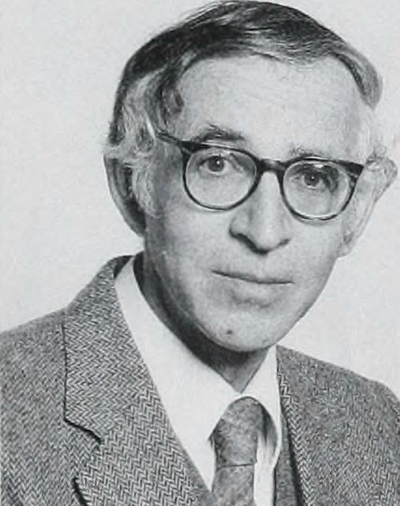博文
晶体电子显微镜技术开发者逝世
|||
晶体电子显微镜技术开发者逝世
诸平
据《华盛顿邮报》( The Washington Post)报道,晶体电子显微镜技术开发者——阿龙·克卢格爵士(Sir Aaron Klug,1926年8月11日-2018年11月20日)2018年11月20日逝世,享年92岁。阿龙·克卢格是一名出生于立陶宛的英国化学家和生物物理学家。1982年获得诺贝尔化学奖。1995-2000年担任英国皇家学会会长。
阿龙·克卢格1926年生于立陶宛。幼年时被带到南非,后入英国国籍。在开普敦取得结晶学方面的硕士学位。1962年进入英国剑桥医药研究委员会所属的分子试验室工作,1978年任该委员会结构研究部主任;同年,荣获美国芝加哥大学和纽约哥伦比亚大学授予的荣誉博士学位,1980年又获瑞典斯德哥尔摩大学荣誉博士学位。30多年以来,他一直致力于生物大分子结构的研究。早在20世纪60年代初,他就开始了对若干种病毒的化学结构的研究,获得了关于病毒粒子是如何从它本身的核酸和蛋白质分子的混合体中形成的详细情况图,弄清了大分子是怎样形成为功能复杂的聚合体的。在研究过程中,克卢格首先创出了一些新方法,例如,他创造了对显微照相进行x射线衍射的方法。运用这一方法,他成功地分析了烟草花叶病毒的构成。70年代初,他从研究单一结构的病毒转移到研究动物细胞中的一些结构。较近一段时间里,他及其研究小组又进一步研究色质(即核酸蛋白质的复合物)的结构。由于染色质是一个大分子聚集体,其体积太大,甚至用克卢格方法都无法直接对它进行结构测定。克卢格及其合作者成功地把染色质分成小到足以用x射线衍射和电子显微镜加以研究的若干片断。根据片断获得的结构信息构成了一个染色体的整个模型。他的这一研究成果,为解决细胞分化和控制功能问题提供了线索。从长远的观点来看,这一研究对解开癌症之谜将是具有重要意义的。1982年,他荣获诺贝尔化学奖金。1995-2000年,他担任英国皇家学会会长(来自百度百科)。更多信息可以参考相关报道:
Aaron Klug, Developer of Crystallographic Electron Microscopy, Dies
The chemist and biophysicist won a Nobel prize for the development of a technique to probe the structures of nucleotide-protein complexes.
Nov 26, 2018
ASHLEY P. TAYLOR

FLICKR, INTERNET BOOK ARCHIVE IMAGES
Aaron Klug, who won the Nobel Prize in Chemistry in 1982 for developing the technique of crystallographic electron microscopy and determining the structures of nucleic acid–protein complexes, died last Tuesday (November 20) at age 92, The Washington Post reports. His funeral is today (November 26), according to an obituary by the Medical Research Council Laboratory of Molecular Biology, where Klug spent much of his career.
“Aaron Klug was a towering giant of 20th century molecular biology who made fundamental contributions to the development of methods to decipher and thus understand complex biological structures,” Venki Ramakrishnan, president of Britain’s Royal Society, says in a statement.
Klug was born in Zelvas, Lithuania, in 1926 but his family, fleeing anti-semitism, moved to South Africa when he was two years old. In 1945, he received his undergraduate degree from the University of Witwatersrand in Johannesburg, where he studied physics, chemistry, and biology, according to The Guardian. In 1948, Klug married dancer and choreographer Liebe Bobrow.
Klug went on to receive a master’s degree from the University of Cape Town, where he studied with X-ray crystallographer Reginald James and “developed a strong interest, broadly speaking, in the structure of matter, and how it was organised,” as he wrote in his Nobel biography.
With a recommendation from James, Klug headed to the UK, where he received a PhD in solid state physics at the University of Cambridge in 1952. Denied a visa to the US, where he was about to take a job, as The Guardian reports, he ended up working with X-ray crystallographer Rosalind Franklin at Birkbeck College, University of London, on the structure of tobacco mosaic virus. This was his introduction to the problem of visualizing nucleoprotein complexes.
These structures are too big for X-ray crystallography but too small for light microscopy, The Guardianreports. Electron microscopy could view such assemblies but, at the time, the resulting images were 2-D only. Klug’s innovation, developed in the 1960s at the Medical Research Council (MRC) Laboratory of Molecular Biology, was to translate 2-D electron micrographs taken from several angles into 3-D structures, a process called crystallographic electron microscopy.
Like X-ray crystallography, crystallographic electron microscopy relies on shooting sub-atomic particles through a molecule of interest and deducing that molecule’s structure from the way the particles are diffracted. Unlike the older technique, crystallographic electron microscopy uses electrons, not X-rays, and can work on proteins that have not been crystallized, as Klug told The Scientist in 2004.
“Aaron always said that curiosity was the most important quality for a scientist and that one had to live in interesting times,” neuroscientist Michel Goedert, who worked with Klug on the structure of the tau protein and its involvement in Alzheimer’s disease, says in the MRC tribute. Klug also worked on the structures of transfer RNAs and zinc fingers, proteins that coordinate zinc ions and often bind nucleic acids.
From 1986 to 1996, Klug served as director of the Laboratory of Molecular Biology. During that time, he negotiated with the MRC and the Wellcome Trust to open the Sanger Centre, now the Sanger Institute, where the genome of the nematode C. elegans was first sequenced (in collaboration with Washington University School of Medicine in St. Louis, Missouri) and where one-third of the International Human Genome Project was completed, according to The Guardian. He was knighted in 1988. From 1995 to 2000, he was president of the Royal Society.
Klug is survived by his wife and son Adam. His other son David died in 2000.
https://blog.sciencenet.cn/blog-212210-1148624.html
上一篇:暗物质“飓风”来袭,检测轴子机遇难得
下一篇:2018年全球癌症预测结果